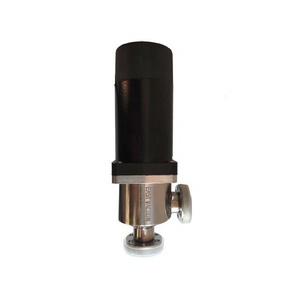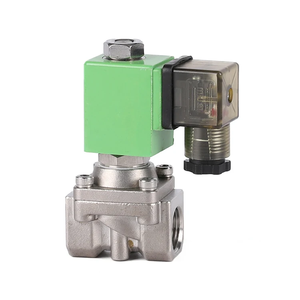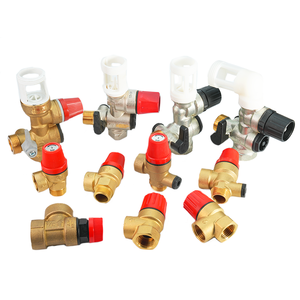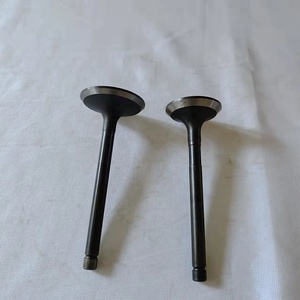
All categories
Featured selections
Trade Assurance
Buyer Central
Help Center
Get the app
Become a supplier

(1839 products available)
























There are several types of KF valves, and each one has a specific role in controlling or regulating fluid movement.
Kf Check Valve
This valve allows fluid flow in one direction only and thereby prevents backflow. Kf check valves are extensively used in piping systems where reverse flow poses a danger to system integrity.
Kf Ball Valve
This valve variation employs a ball with a hole to control flow. When the ball is turned, the hole aligns with the pipe, allowing fluid to pass. When it rotates to a solid part, flow stops. KF ball valves give reliable sealing, easy operation, and fast opening or closing. They are good for isolating fluid and gas in pipelines.
Kf Globe Valve
Globe valves use a disc to block flow, allowing gradual speed regulation. They differ from ball valves, which offer better sealing. Globe valves are suitable for functions that require fine flow balancing. Globe control valves meet this need; they help with flow control in complicated systems.
Kf Pressure Relief Valve
Pressure relief valves safeguard systems from pressure build-ups, preventing possible harm. They operate by releasing excess pressure when the system reaches a certain limit. KF pressure relief valves are mostly found in high-pressure systems. These include vessels, reactors, and compressors.
Kf Gate Valve
These are normally used to fully open or shut a pipeline to allow fluid passage. KF gate valves are used in processes where there is a need for complete isolation or uninterrupted flow. This is because they do not support flow regulation.
Pharmaceutical Industry
In this industry, the control and precision of fluids are vital. Kf valves help in controlling and regulating liquid and gas chem mixtures and product transfers. KF ball and globe valves are applied for isolation and flow control. KF check valves secure one-way fluid transfers to preclude backflow. This back pressure can harm equipment in this sensitive production.
Oil and Gas Industry
The KF valves, especially the KF pressure relief ones, prevent system overpressure. They are employed in pipelines, refineries, and drilling operations. They ensure safety by releasing excess pressure.
Chemical Processing Industry
The chemical processing industry works with many hazardous and corrosive materials. Therefore, it needs equipment that is durable enough to handle both extremes. KF valves are important for regulating and controlling fluids. They withstand corrosive substances and extreme pressures. Kf globe and check valves are commonly utilized in this industry.
Water Treatment and Distribution
In water treatment plants, pipeline distribution systems, and sewage facilities, the systematic regulation of water and wastewater is necessary. For effective functioning, Kf ball and gate valves are used in the isolation and shut-off functions. Kf check valves are employed to prevent backflow and ensure forward water movement. This prevents contamination and maintains system integrity.
Pneumatic Systems
These systems manipulate air-powered tools and actuators. They also employ KF valves for pressure control, flow regulation, and system ventilation. KF pressure relief valves are used to control system pressures. They also prevent dangerous overpressurisation scenarios. KF valves help maintain operational efficiency and safeguard equipment in these high-demand industries.
Material Selection
High-quality materials, such as stainless steel and brass, are vital for Kf valves. They safeguard against corrosion, wear, and high temperatures. The right material choice is essential for the long-term durability of Kf check valves in corrosive environments.
Manufacturing Standards
Strict manufacturing processes ensure proper Kf valve functioning. Adherence to industry-wide standards like ISO means that these valves will have consistent performance, increasing reliability across all applications.
Leak Prevention
Ensuring no leaks occur is really important, as leaks waste resources and can be dangerous. Quality seals and gaskets prevent leaks, reducing safety risks and potential costly downtime. This ensures long-term reliability and efficiency for the customer.
Pressure Handling Capabilities
Good Kf valves should be able to withstand high pressures without failure. Variations like Kf pressure relief valves must operate safely under pressure. This prevents hazardous scenarios. Proper evaluation of these capabilities prevents accidents in high-pressure environments.
Corrosion Resistance
In dire conditions, where water and some of the chemical processing' corrosive elements are present, corrosion resistance becomes essential. It ensures the valve's durability and longevity. Regular maintenance means less frequent replacement. This results in increased savings for the customer.
System Pressure Monitoring
Regularly checking the pressure in systems that have Kf valves prevents overpressure situations. This is adverse to these valves as it leads to failures that end up posing safety dangers. Using pressure relief valves for such monitoring helps to maintain safe operating conditions and reduce systemic risks.
Regular Maintenance
Frequent valve checks, lubrications, and part replacements keep them working well. Good maintenance stops malfunctions, which can be risky when systems are under pressure or in heavy use. This reduces accidents and damage to the customer's equipment.
Emergency Shutoff Procedures
Establishing clear emergency shutoff procedures for Kf valves can help prevent dangerous situations. Workers should know how to close valves quickly in emergencies. This reduces the risk of harming personnel or damaging equipment.
Worker Training
Educating customers on Kf valve operations, maintenance, and safety procedures prevents accidents. When workers know how to install, work with, and care for Kf valves properly, they can avoid the most common Kf valve-related injuries. This ensures that there is not only effective performance but also safety.
Use of Personal Protective Equipment (PPE)
Personnel working around Kf valves in industrial settings should wear PPE. PPE protects against possible hazards. These can be high-pressure gas releases, chemical exposure, or falling heavy parts. PPE reduces injury risk so workers can perform safely.
A1. The KF in KF valves denotes "Klein Flans," which translates to "small flange" in English. These are specially designed vacuum components with a flat, key-shaped edge. This edge easily attaches to matching parts using a clamp that holds rubber/soft metal sealing rings.
A2.A.Kf ball valve has several benefits. They include reliable sealing, straightforward handling, and a quick open/close action. Its durability allows it to handle high-pressure and high-temperature conditions while preventing leaks and providing a long-lasting performance.
A3.Yes, Kf valves have specific pressure ratings for every type of valve. The pressure rating ensures that the valves safely control the desired pressures within a system, be it a high-pressure industrial setup or a low-pressure laboratory.
A4.Kf valve types that can tolerate high-pressure scenarios include Kf pressure relief valves and Kf globe valves. Manufacturers make these valves with durable materials that withstand continuous stress while safely regulating pressure in demanding environments.
A5.Maintaining regular inspections and lubrication while ensuring proper sealing and correct pressure usage extends a Kf valve's lifespan. Avoiding extreme conditions, using the right valve for specific tasks, and conducting periodic tests also contribute to its longevity.